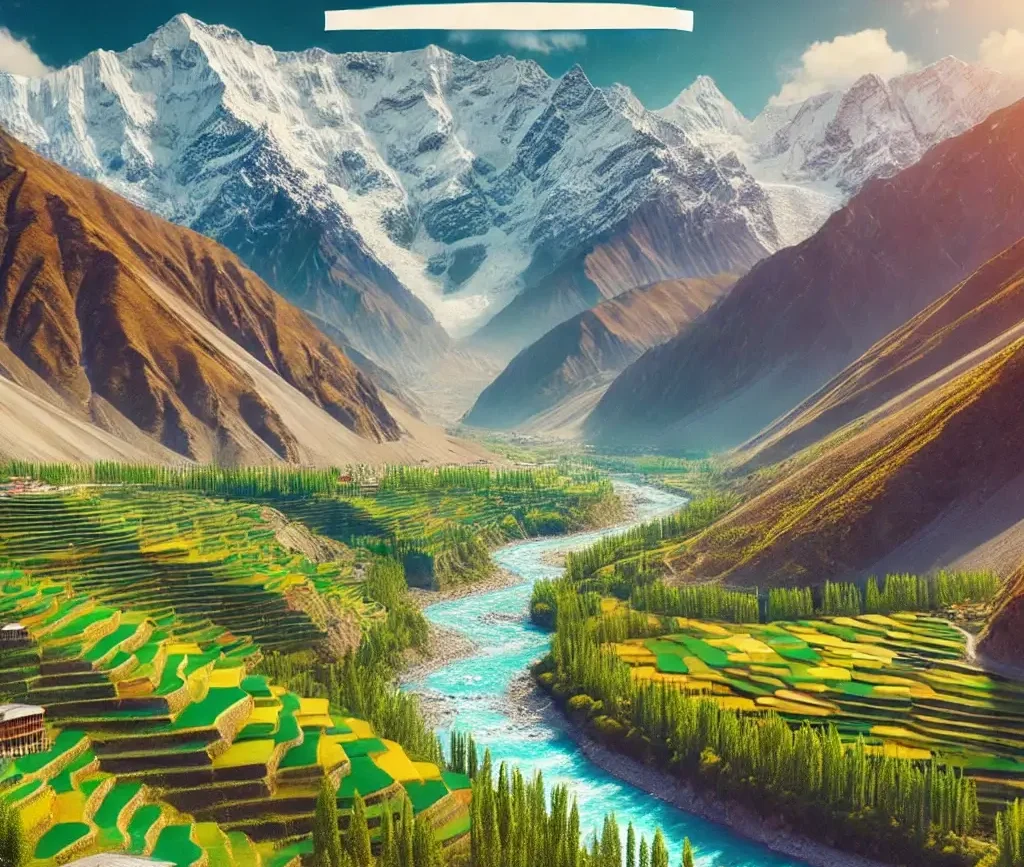Tucked away in northern Pakistan, Hunza Valley stands out for its breathtaking beauty and cultural richness. Set against the backdrop of the majestic Karakoram and Hindu Kush mountain ranges, this valley captivates visitors with its stunning landscapes, where lush green terrains meet snow-capped peaks. It’s a place where the vibrant colors of nature and local traditions come alive.

Hunza Valley is renowned for its stunning natural beauty, rich culture, and hospitable people. Tourists are drawn to its mesmerizing scenery, where towering mountains like the famed Rakaposhi provide an awe-inspiring view visible from regions such as Karimabad. This scenic backdrop is complemented by the valley’s rich cultural heritage, evident in its local bazaars, where artisans sell handicrafts like embroidered caps, rugs, and gemstones.
Aside from the natural allure and cultural vibrancy, Hunza Valley offers a unique travel experience on the Karakoram Highway, a legendary route that connects travelers to this serene paradise. Whether exploring the valley’s diverse geographic subdivisions or indulging in its historical treasures such as the renowned forts, visitors find both tranquility and adventure in this mesmerizing region.
Geographical Significance and Beauty

Hunza Valley, nestled in the Gilgit-Baltistan region of Pakistan, captivates with its breathtaking landscapes and unique climate. Visitors are drawn to its majestic mountains, lush valleys, and serene environment, offering a tranquil escape and picturesque views. The valley’s climate varies, making it essential to choose the right time for visiting.
Landscape and Scenery
Hunza Valley boasts a stunning combination of towering peaks, glacial streams, and verdant terraces. The Karakoram Range, featuring the famous Rakaposhi and Ultar Sar, provides a dramatic backdrop. The valley’s terraced fields and apple orchards enhance its beauty.
This region is celebrated for its crystal-clear rivers and the Attabad Lake, a turquoise gem formed by a landslide. Baltit Fort and Altit Fort are notable landmarks, offering panoramic views and insights into local history. Visitors often find the untouched beauty and peaceful ambiance the favorite aspects of Hunza Valley.
Climate and Best Times to Visit
The climate in Hunza Valley varies significantly across seasons. April to October is the best period to visit, with pleasant temperatures ideal for sightseeing and outdoor activities. Spring brings blooming flowers, while autumn paints the valley in vibrant colors.
The winter months, though cold, attract those interested in snow-capped landscapes and winter sports. Travelers are advised to plan visits based on preferred activities, as each season presents unique charms. Visiting during the recommended months ensures a more comfortable experience and allows travelers to fully enjoy Hunza’s natural wonders.
Cultural and Historical Heritage

Hunza Valley boasts a deep historical tapestry and a vibrant cultural legacy. The valley’s position on the ancient Silk Road shaped its development, while its cultural landscape reflects the values and traditions of the local communities, primarily the Ismaili Shia Muslim population.
The History of the Hunza Valley
The history of Hunza Valley stretches back centuries, with archaeological evidence pinpointing human settlements as early as 500 BCE. Situated along the historic Silk Road, a network of trade routes, it served as a pivotal hub connecting China to the Mediterranean. This location fostered a blend of cultures and ideas.
Over the years, numerous traders and travelers passed through the valley. They brought not only goods but also influences that enriched local culture. The valley was ruled by the local monarch, known as the “Mir.” They held power for several centuries until 1974 when the princely state was dissolved. Today, the valley’s historical significance is reflected in the traditional structures and community practices still present.
Local Culture and Traditions
The local culture in Hunza Valley is distinguished by its strong sense of community and enduring traditions. The inhabitants, predominantly Ismaili Shia Muslims, are renowned for their hospitality and commitment to cultural preservation. The society places a strong emphasis on education and development.
Music and dance play essential roles in cultural expression, with traditional festivals such as Ginani celebrated with enthusiasm. Craftsmanship is another cornerstone of cultural identity, with local artisans creating beautiful textiles and intricate woodwork. The Hunza people also celebrate their history through storytelling, passing down stories of their ancestors and the valley’s past, maintaining a rich cultural heritage for future generations.
